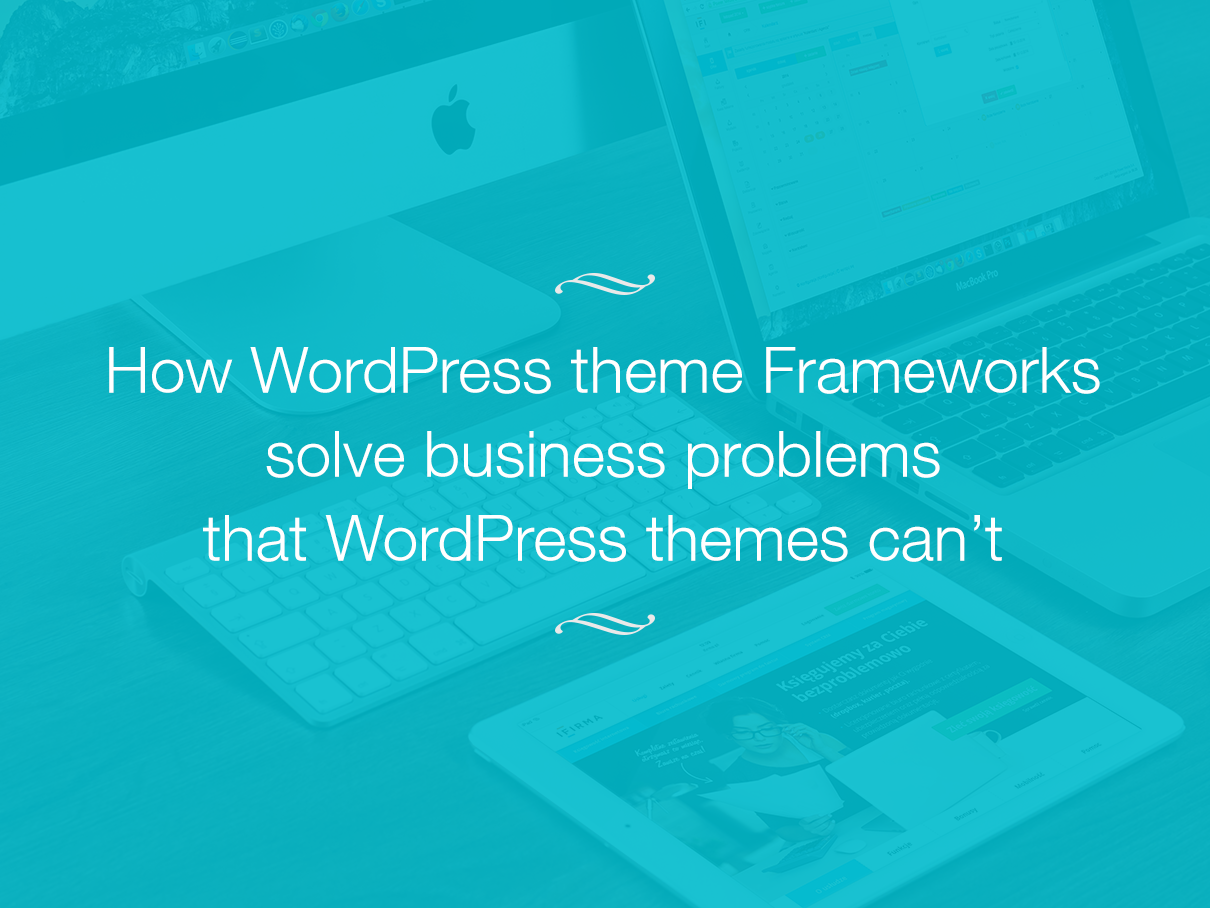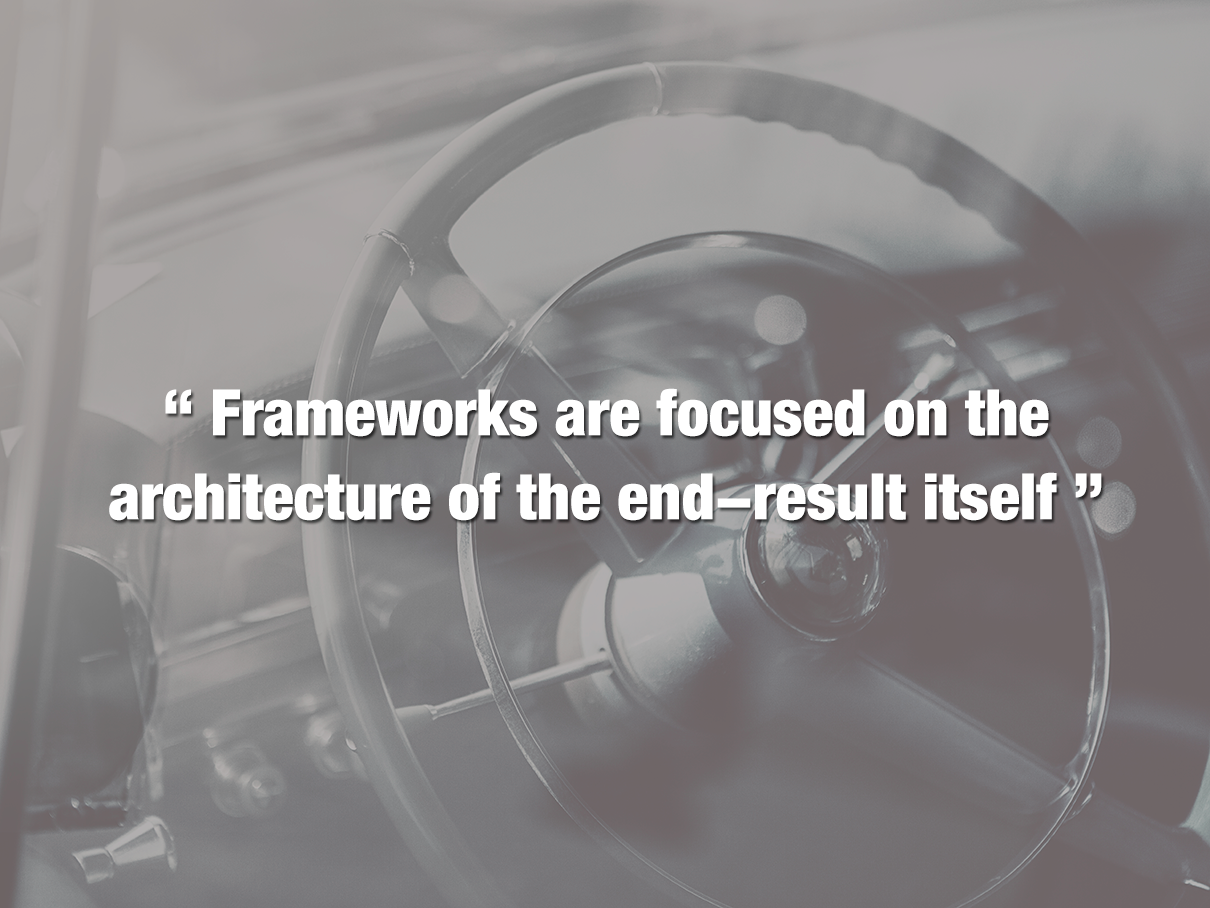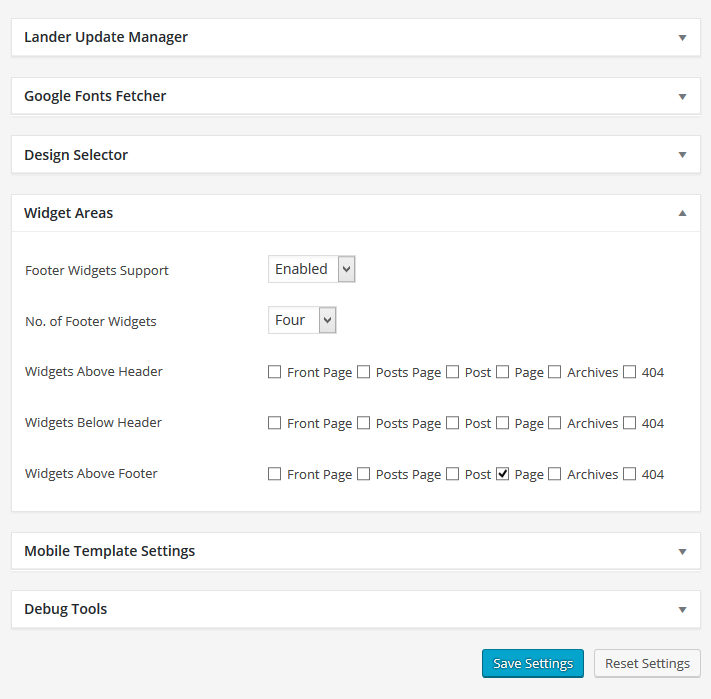
And yes… I’m referring to premium themes and premium frameworks. The larger majority of WordPress users opt for premium WordPress themes. A smaller number of these head in for premium WordPress theme frameworks.
This is the foundation on which your business will be built. And it’s this base that will be the deciding factor that will determine how well and to what extent your website succeeds in it’s purpose.
Not sure about the purpose of your website? Your website doesn’t matter than; neither does this article… go away.
Them gone? Cool.
Your website has a very specific purpose. While I can blatantly state that the end goal is money, there’s no shortcut to getting it.
Every step matters.
And the first step is deciding the goals of your website and how you’ll achieve them.
SEO? Content marketing? Link building?
Yes, they are all a part of the cycle to success.
But here’s the catch: While SEO, advertising, etc. are all the top of the fuel, the website is the bottom end of it. But as far as your business process is concerned, it’s this bottom end that you have to decide about first.
Theme frameworks are born out of this business-pain… the pain of frustration with themes… that something isn’t available in the theme and can’t possibly be implemented without modifying the core of the theme.
That you can’t go on changing your theme every 6-months to suit to keep up with your growth.
Now WordPress purists maintain that WordPress themes should not be focused on function. But no matter how hard you try, it’s a business reality: themes just can’t be treated as a WordPress front-end.
How about this: You can run WordPress without plugins, but you can’t make WordPress run without a theme. The front-end is where all the visitor interaction happens and it’s this front-end that not only needs to be elegant but also be functionally useful.
I’ve read many articles (and believe me… it’s “many”). And all articles try to create some sort of abstraction of the difference between themes and frameworks. I simply put it like this:
Theme=facelift, framework=substance.
The difference is the approach themes and frameworks take for addressing and solving the business challenges of a website.
For example, a theme would be geared to help you get a website up and running quickly. With some configuration you can have your logo and branding creatives up and you are good to go.
The framework on the other hand will definitely require you (or your developer) to think and consider what you want out of it and how you want to develop and deploy the solution. This could mean thinking from the perspective of user-experience, site-layout, search experience etc. in addition to a design. Most themes aren’t able to make this cut.
A framework will need you to customize and deploy it as per your functional requirements into an actual, custom theme-design.
Function against Looks
Premium themes come in a variety of design and come in all forms from responsive, multiple sidebars, widgetized areas etc to a drag and drop functionality. Themes are pretty much the final design itself (minus the personalization/branding).
The focus of frameworks is on the functionality and effectiveness of the website. Frameworks are focused on the architecture of the end-result itself.

Frameworks don’t have a face (front-end design).
Technically they do, but it’s a minimal design to keep the site functioning after you switch to the framework.
The framework is coded such that you can adapt and extend it to your website’s requirements and deploy it.
This means you get to decide what’s functionally important to you. You are the decision maker, not the theme itself.
For example, you get to decide if you need an HTML5 website or just the good ‘ol XHTML. You get to decide how you want to have the UX elements laid out for maximum effect, highest conversion-rates etc.
WordPress theme frameworks allow you excellent fine-tuning of the solution to your requirement.
The Theme Frameworks offer Extensibility
A WordPress Theme Framework is a platform that allows you to build your website (as against a theme which has fixed functionality and design). Extensibility is something that will determine how long you’ll live with your WordPress theme. One day your theme will fall short of your requirements and you’ll have to change it.
WordPress Theme Frameworks on the other hand, due to the virtue of their extensibility allow you to build complex WordPress solutions that won’t let you down no matter how complex your requirements and business growth.
It’s a one-time decision.
It also means you have a common consistent base feature-set that you can work with, without wasting time on changing, learning, customizing and deploying a new theme every 6 months. You will be able to make incremental changes without reworking the basics.

Frameworks Provide 100% Control over Customizations
Most WordPress themes come with settings and configuration options of some kind. However the controls are limited. And when you want to tweak things beyond what the configuration options allow, you’ll have limited options. While you can have child-themes to alter the looks, that’s almost as far as themes can go.
Things with theme-frameworks are different. They allow you to take control at a granular level via code. For example, WordPress theme frameworks allow you to control the markup via hooks and filters. This also implies that you can customize the micro-data and tailor how search engines understand your website-content.
Quality vs Quick-Code
While themes and frameworks are both intended for a wide user-base, themes are often developed for specific use-cases. Theme-frameworks on the other hand are built for deployment in a wider range of situations.
Theme-frameworks thus will play nicely with more plugins than you can expect a theme to.
They can easily be re-purposed for specific needs.
And the functionality of the framework itself is coded such that it is more qualitative than quantitative.
For example a theme could have implemented a layout with a sidebar followed by content. However a framework would have implemented the same layout while using CSS to reorder the elements instead of using the HTML markup to order things.
This is a simple example that outlines how well-architected solutions focus more on best practices like keeping the presentation separate from the structural implementation.

Summary:
Such architecture has huge impact on how your website and business fares in the long term.
A short sighted approach may point you to a premium WordPress theme. However in the long term, any serious business will ultimately be running on top of a premium WordPress theme framework.
On the flip side, I’d actually make an important distinction: There’s a difference between using a theme-framework and using a theme based on a framework.
Themes based on a framework allow you a consistent feature-set, functionality and all of the features I quoted above. They could be child-themes like StudioPress pitches it’s child-themes or it could be parent themes based on framework like Hybrid Core which is a stellar example of what an ideal WordPress theme should be coded like — a de facto, gold standard of WordPress themes.
The point is that regardless of which theme you go for, I personally suggest you to go for one that’s built on a framework — it’s a platform that will architect success of your website and business.
